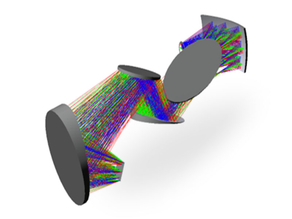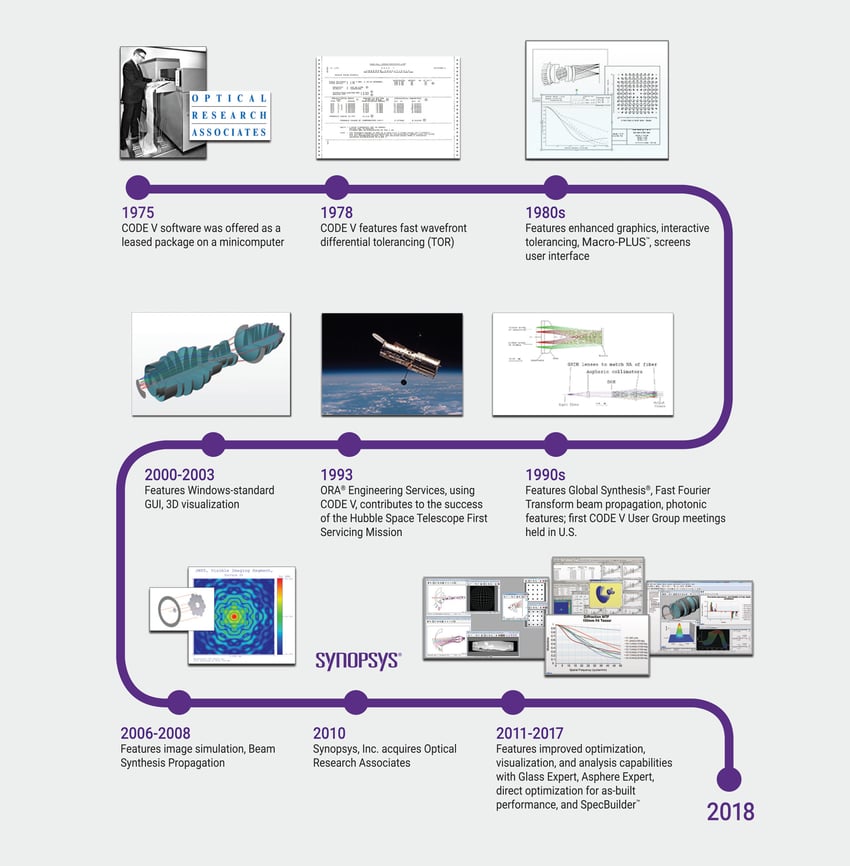An evaluation of Code V optical design software. The evaluation was performed with a view to using the software as a potential undergraduate optics study, such as an optics experiment or course subject like the Applied Optics course that is a subject in the Physics Technology option of the Applied Sciences course. CODE V is the industry-leading optical design software CODE V is used for the design, optimization, analysis, and tolerancing of image-forming optical systems and free-space photonic devices. CODE V combines superior engineering capabilities with the control and access of an intuitive user interface. The CODE V SpecBuilder feature helps designers easily track and communicate how well their optical system designs are meeting project specifications and goals. Version 11.2 expands the library of pre-built specifications based on Synopsys’ optical engineering and industry expertise.
Zemax is a company that sells optical design software.[1] OpticStudio is its flagship product and a commonly used optical designprogram for Microsoft Windows.[2][3][4][5] It is used for the design and analysis of both imaging and illumination systems.
History[edit]
OpticStudio, then called Zemax, was originally written by Ken Moore and was the first optical design program specifically written for Windows.[6][7] It became commercially available in 1990.[8] The first version was called Max, named after the programmer's dog. The name was later changed to Zemax due to a trademark conflict.[6] The software was rebranded as OpticStudio in 2016.[9]
The program was originally sold by Focus Software, which later became Zemax Development Corp.[10] The latter merged with Radiant Imaging in 2011 to form Radiant Zemax.[4] In 2014 Radiant sold Zemax to Arlington Capital Partners, which named the company Zemax, LLC.[11] Arlington Capital Partners sold Zemax to EQT June 26, 2018.[12]
Features and applications[edit]

OpticStudio is an optical design program that is used to design and analyze imaging systems such as camera lenses, as well as illumination systems. It works by ray tracing—modelling the propagation of rays through an optical system. It can model the effect of optical elements such as simple lenses, aspheric lenses, gradient-index lenses, mirrors, and diffractive optical elements, and can produce standard analysis diagrams such as spot diagrams and ray-fan plots.[10][13] OpticStudio can also model the effect of optical coatings on the surfaces of components.[10] It includes a library of stock commercial lenses.[14] OpticStudio can perform standard sequential ray tracing through optical elements, non-sequential ray tracing for analysis of stray light, and physical optics beam propagation. It also has tolerancing capability, to allow analysis of the effect of manufacturing defects and assembly errors.[15]
The physical optics propagation feature can be used for problems where diffraction is important, including the propagation of laser beams and the coupling of light into single-mode optical fibers.[16] OpticStudio's optimization tools can be used to improve an initial lens design by automatically adjusting parameters to maximize performance and reduce aberrations.[17]
References[edit]
- ^'Zemax company website'. Zemax. 8 August 2019.
- ^Fischer, Robert E.; Tadic-Galeb, Biljana; Yoder, Paul R. (2008). Optical System Design (2nd ed.). New York: McGraw-Hill. p. 603. ISBN0-07-147248-7.
...the Zemax software package, one of the industry's standards.
- ^Smith, Warren J. (2007). Modern Optical Engineering (4th ed.). McGraw-Hill. p. 436. ISBN0-07-147687-3.
- ^ ab'Radiant, Zemax merge with backing from Evergreen Pacific'. Bizjournal. Retrieved 21 July 2013.
- ^Geary, Joseph M. (2002). Introduction to Lens Design: With Practical Zemax Examples. Willmann-Bell. ISBN0-943396-75-1.
- ^ abMoore, Ken (21 April 2006). 'Why is it called ZEMAX?'. ZEMAX Users' Knowledge Base. Archived from the original on 12 May 2008. Retrieved 30 May 2008.
- ^McLean, Ian S. (2008). Electronic imaging in astronomy : detectors and instrumentation (2nd ed.). Berlin: Springer. p. 203. ISBN3540765824.
- ^'Design software: which package do you need?'. Opto & Laser Europe. July–August 2003. Retrieved 21 July 2013.
- ^'OpticStudio 16 manual'(PDF). Zemax customer website. 2016.
- ^ abcTesar, John (March 1997). 'Latest Zemax creates and evaluates designs'. Laser Focus World. 33 (3). Retrieved 2008-05-30.
- ^'About us'. Zemax.com. Retrieved September 10, 2015.
- ^'EQT press release'. EQT website. June 26, 2018.
- ^Laikin, Milton (2006). Lens Design (4th ed.). CRC. ISBN0-8493-8278-5.
- ^Fischer (2008), p. 590.
- ^'Tolerancing'. Radiant Zemax website. Retrieved 22 July 2013.
- ^'Exploring Physical Optics Propagation in Zemax'. Radiant Zemax website. Retrieved 22 July 2013.
- ^'Optical Optimization'. Radiant Zemax website. Retrieved 22 July 2013.

External links[edit]
